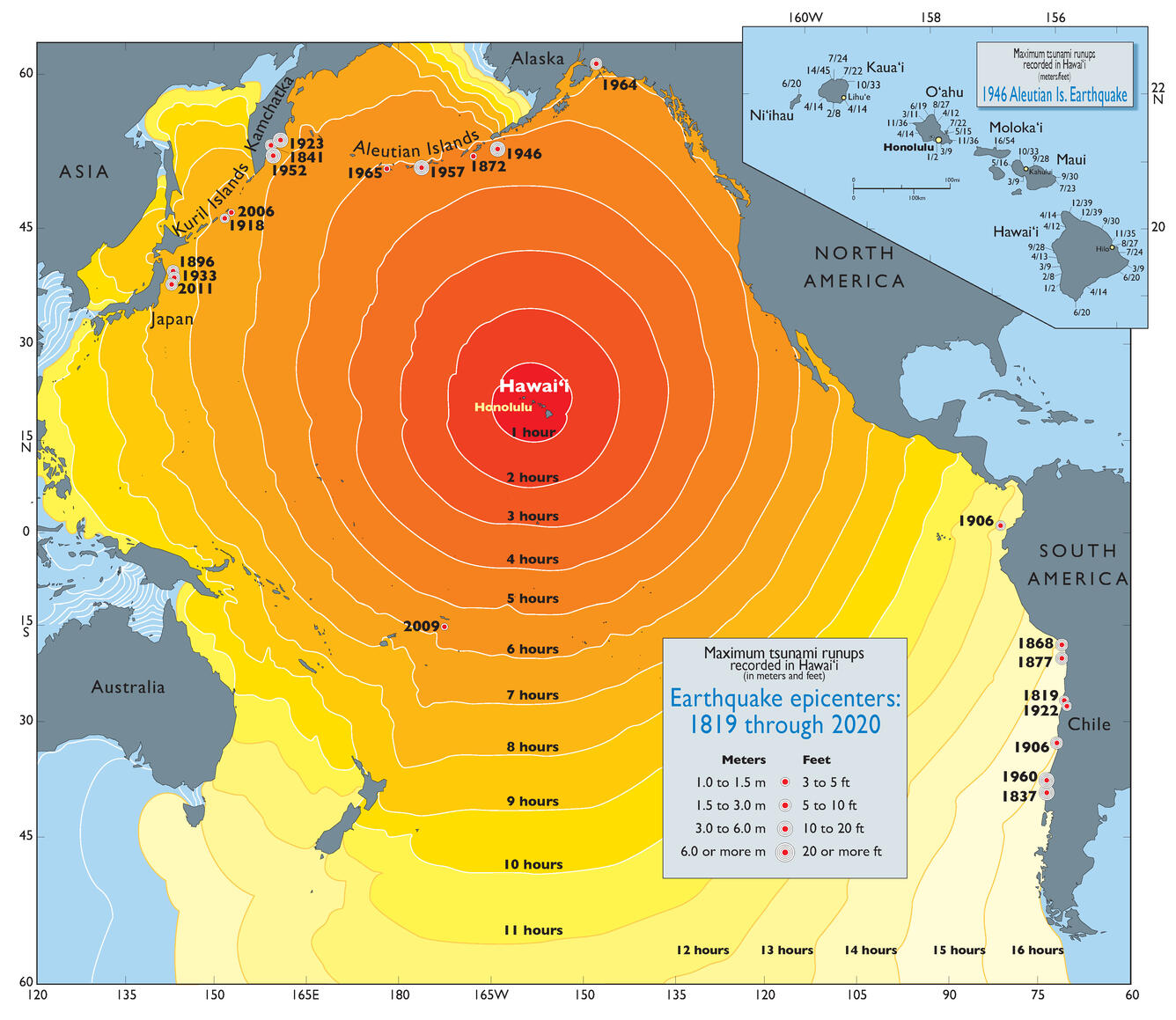Understanding Tsunami Watches in Hawaii
As an HR professional or business leader, staying informed about natural disasters is crucial, especially in regions prone to such events. Tsunami watches are critical notifications that indicate the potential for tsunami waves generated by seismic events. In Hawaii, where the threat of tsunamis is a constant concern, understanding what these watches entail can help safeguard your business and employees.
Tsunami Watch Explained
A tsunami watch is issued by the Pacific Tsunami Warning Center (PTWC) following a significant seismic event—like an earthquake—indicating the possible generation of a tsunami. Unlike a warning, which signifies that a tsunami is imminent or already occurring, a watch indicates that a tsunami may occur.
According to the U.S. Geological Survey, Hawaii is continually monitored for seismic activity, and effective protocols are in place to warn and prepare residents and businesses for potential tsunami threats. The PTWC and the Hawaiian Volcano Observatory (HVO) work tirelessly to analyze seismic data and provide alerts whenever necessary.
Why Should HR Professionals and Business Leaders Be Concerned?
Tsunamis can have devastating impacts on businesses, including loss of life, property damage, and disruption of operations. For HR professionals, safeguarding employees is paramount. Here’s why understanding tsunami watches matters:
- Employee Safety: The primary concern during a tsunami watch is the safety of employees. Knowing when a tsunami watch is issued allows businesses to take proactive measures to protect their staff, including evacuation plans or remote work arrangements.
- Business Continuity: Understanding tsunami threats enables businesses to develop continuity plans that minimize disruption during severe weather events. This includes planning for communication, resource allocation, and recovery strategies.
- Regulatory Compliance: Some industries may be subject to regulations regarding disaster preparedness and response. Familiarity with tsunami alerts can help ensure that your business complies with local, state, and federal regulations.
How to Prepare for a Tsunami Watch
Preparation is key when it comes to tsunami risks. Here are some essential strategies for HR professionals and business leaders to consider:
- Develop an Evacuation Plan: Ensure that your business has a clearly defined evacuation plan in case of a tsunami. Make sure all employees are aware of this plan and have access to emergency contacts and escape routes.
- Training and Drills: Regularly training employees on how to respond during a tsunami watch is vital. Conducting drills can help familiarize everyone with the protocols and reduce panic during actual events.
- Stay Informed: Monitor official sources such as the U.S. Geological Survey and local emergency services for up-to-date information regarding tsunami watches and warnings. Encourage employees to do the same.
- Create an Emergency Response Team: Form a team responsible for responding to emergencies. This team can coordinate evacuation efforts and ensure that everyone is accounted for during and after an emergency.
- Communicate Effectively: Implement a communication plan that ensures all employees are informed promptly of a tsunami watch. Use multiple communication channels such as emails, SMS, and public announcement systems.
The Importance of Continuous Monitoring
The USGS and PTWC continuously monitor seismic activity to ensure swift responses to any tsunami threat. In Hawaii, where geographic factors may amplify tsunami effects, this monitoring is crucial. For businesses, collaborating with local agencies to remain informed about seismic activity can enhance preparedness.
It is crucial for organizations to stay ahead of potential threats—not just tsunami watches but all types of emergencies. Using technology to automate alerts and keeping communication lines open can foster a culture of preparedness within your organization.
Embracing Technology for Enhanced Safety
In today’s digital age, technology plays a significant role in disaster preparedness. To enhance your tsunami preparedness plan, consider integrating the following technology:
- Real-time Alert Systems: Implement systems that can notify employees of changes in tsunami watches or warnings instantly. This helps maintain clear communication during emergencies.
- Emergency Management Software: Use software applications that help manage emergencies, including evacuation protocols, resource allocation, and communication strategies.
- Location Tracking: For businesses with staff in the field, using location tracking solutions ensures you can account for employees should a tsunami threat arise.
Conclusion
Understanding tsunami watches is essential for all businesses, especially in tsunami-prone regions like Hawaii. HR professionals and business leaders must prioritize employee safety and incorporate effective communication and evacuation plans into their strategic operations. By staying informed, embracing technology, and emphasizing preparation, businesses can navigate tsunami threats and protect their most valuable asset—people.








